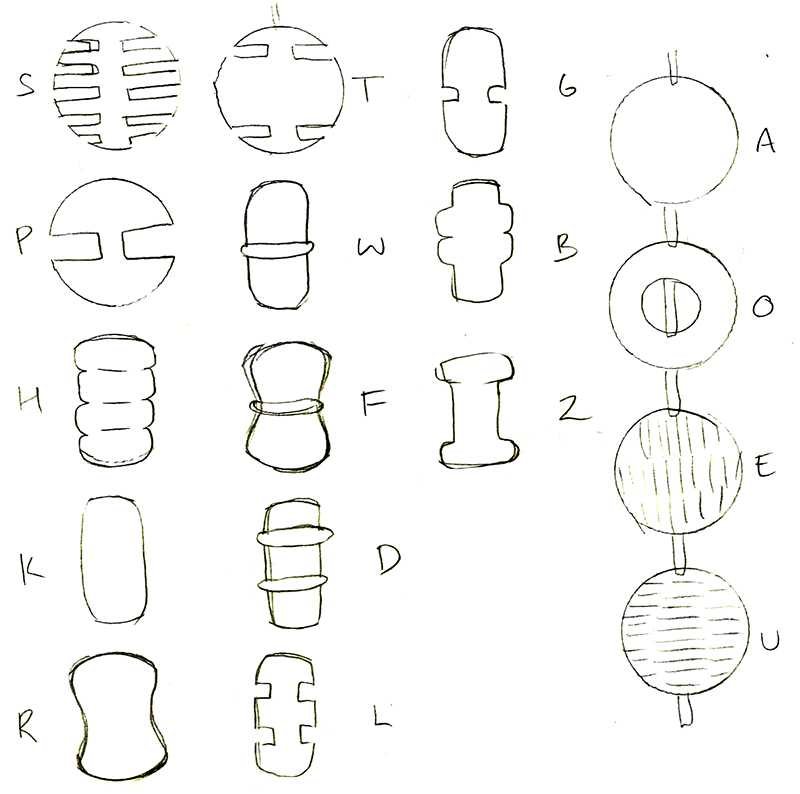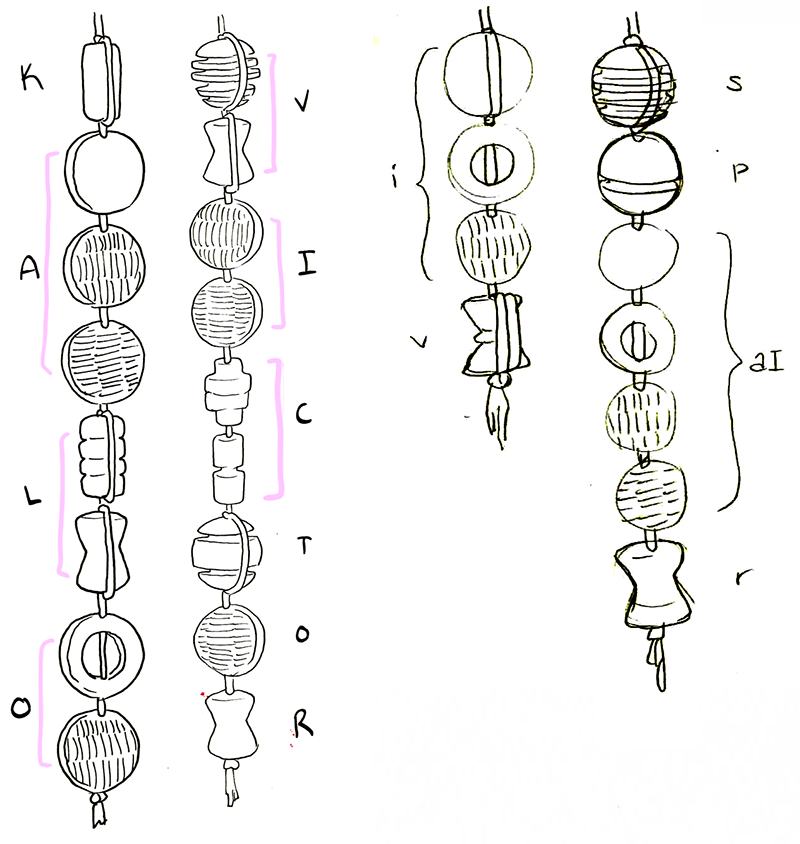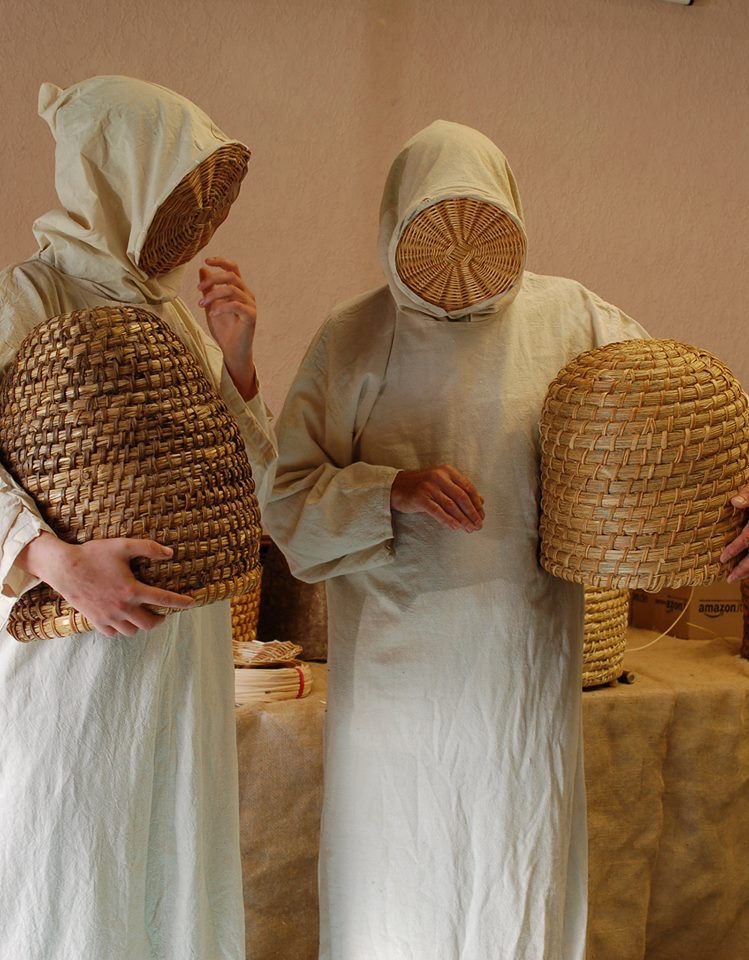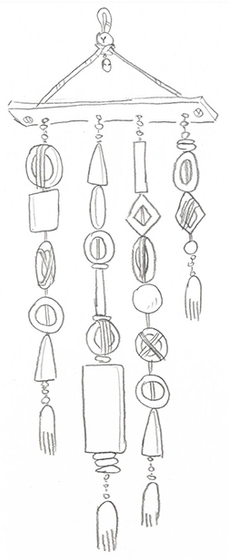Beads

| DATE | August 2020 - January 2021 |
| INSPIRATION |
Medieval beekepers Stenotype machines |
| RELATED | Ruin of the House of the Divine Visage |
This bead script was originally put together for another project Spire and I were working on together. What I have here was too complicated for what Spire wanted to use it for so he ended up simplifying it for the final comic, but I think it's still interesting to talk about the original version!
The House of the Divine Visage is a holy house where worshipers and workers must cover their faces, as the god that lives in the centre is the only one whose face can be seen. The majority of these masks are made from woven wicker and the monastery is scattered with wicker and wooden screens to separate devotees from each other.
I used stenotype as a basis for this script (see the Development section for a more detailed explanation). Combinations of beads would indicate certain letters; there are 13 consonants and 4 vowels. Consonant beads are rounded and vowels are flat discs to differentiate them from each other. The leading consonant cluster in a syllable has string looped around it and words are separated by knots.

Examples

Development
The idea of using natural materials like reeds and wood originated with this picture I saw on Twitter. We wanted to bring that organic texture over into the monastery's holy texts, especially after working for so long on Zhavise's obnoxiously bright and colourful scripts. If you'd like to learn more about this style of beekeeper clothing, blamensir has a wonderful writeup on their blog!

My first idea was a system of knots - worshipers would have a thick tassle around their necks or on their hoods. Spire suggested the idea of wooden symbols to denote rank or names.

I latched onto that idea and decided to style the beads after stenography, a shorthand typing system used by people like court reporters. Stenotype works by pressing a combination of letters at the same time to type whole syllables rather than individual letters; keys on the left of the keyboard create the first consonant in a syllable, vowels are in the centre, and then a final consonant is created on the right of the keyboard. Combinations of keys are called "chords". The combinations don't necessarily correlate to the actual letters so stenotype transcripts end up looking like this:



I wanted to have beads work a similar way to minimise the number of beads we'd have to design, and also to make the system difficult and obtuse for in-world newcomers to read. Knotwork would be reserved for punctuation and tone.

Spire's concept was that each bead was a very different shape (see left), but I wanted to stick with shapes that would be readable from all angles, since the beads would be hanging in chains and would swivel and move. I intended the beads to also be readable by touch, so having each bead a more standard shape and differ only in minor ways would mean readers could feel out each shape faster. I ended up with the script at the very top of the page, though now that I'm typing all this out I'm itching to rework it a little.
For the final comic, Spire revamped the entire bead system with brand new shapes and a new consonant-only alphabet. He wrote up an entire post detailing his development so if you want to check that out you can find it on his Patreon (with a more refined reference here)! Sample to the right.